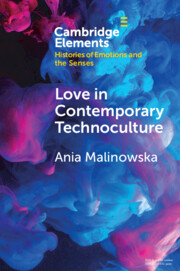Element contents
Love in Contemporary Technoculture
Published online by Cambridge University Press: 01 March 2022
Summary
- Type
- Element
- Information
- Online ISBN: 9781108884976Publisher: Cambridge University PressPrint publication: 31 March 2022
References
- 7
- Cited by

